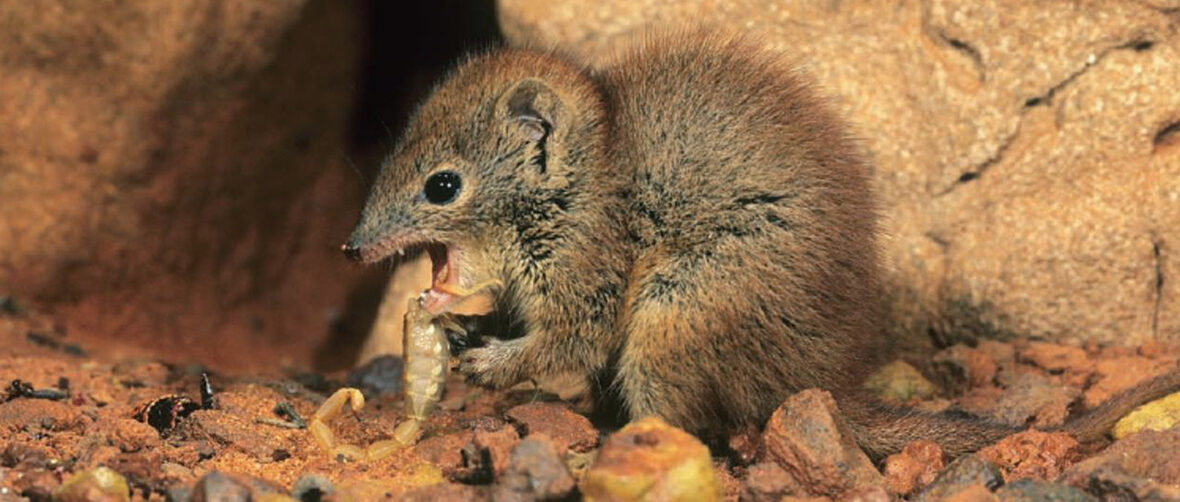
The little red kaluta is a tiny marsupial endemic to northwestern Australia. These critters are the only member of their genus, Dasykaluta. They prefer a dry grassland habitat. Due to no major natural or man-made threats, these creatures are abundant and thus listed as Least Concern by the IUCN. Their population trend is unknown though. This article is on special request by an anonymous fan.
First the Stats…
Scientific name: Dasykaluta rosamondae
Weight: Up to 1.41 ounces
Length: Up to 3.9 inches, plus up to a 3 inch tail
Lifespan: Up to 4 years
Now on to the Facts!
1.) Other common names include: kaluta, russet antechinus, little red antechinus, and spinifex antechinus. However, antechinus are larger and have bigger ears.
2.) They were first described by W.D.L. Ride in 1964.
3.) “Kaluta” is an Aboriginal name that hails from the Nyamal language.
4.) The generic name Dasykaluta, means “hairy kaluta”.
5.) Their species name, rosamondae, is in reference to Rosamund Clifford, the famous mistress of Henry II of England, who is claimed to have had red hair, their habitat resembling “a house of wonderful working, so that no man or woman might come to her …”, alluding to a maze at the Woodstock Palace where the king hid her and finally the place of the species’ discovery, Woodstock Station.
But wait, there’s more on the little red kaluta!
6.) They feed on various insects, invertebrates, and arachnids.
7.) These critters tend to constantly flick their tail as they search their surroundings.
Did you know…?
Males procreate with various females for up to 14 hours straight! Once completed, they die due to exhaustion.
8.) Females undergo up to a 7 week gestation (pregnancy) that yields up to 6 joeys.
9.) Joeys, once born, move to their mother’s marsupium (pouch) and are weaned in up to 4 months.
10.) Little red kalutas are nocturnal (active at night).
11.) Birds of prey are their primary predators.
Now a Short Little Red Kaluta Video!
Be sure to share & comment below! Also, check out the Critter Science YouTube channel. Videos added regularly!
Want to suggest a critter for me to write about? Let me know here.
Some source material acquired from: Wikipedia & IUCN
Photo credit: CSIRO Publishing



